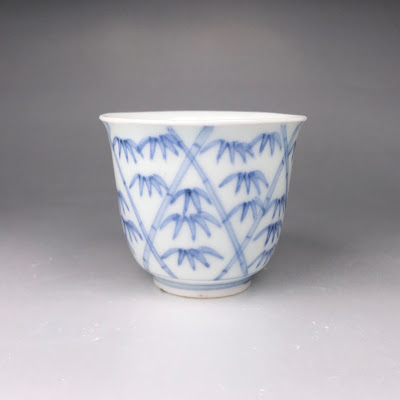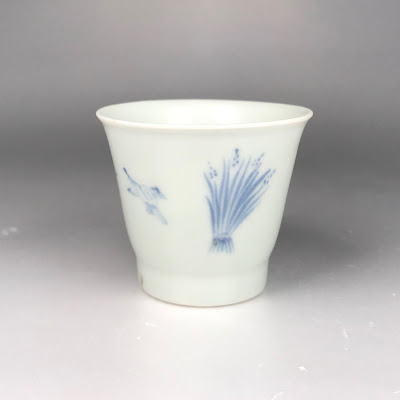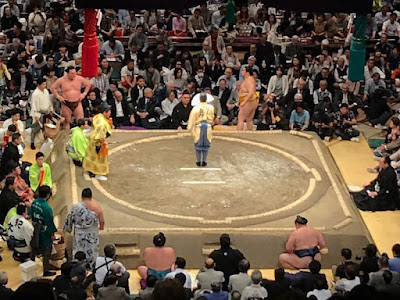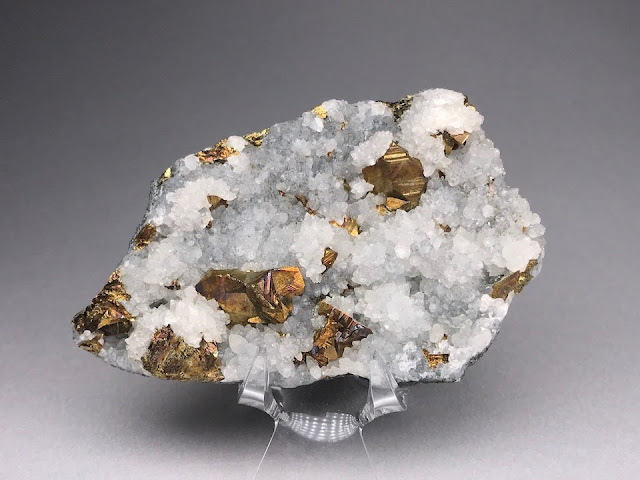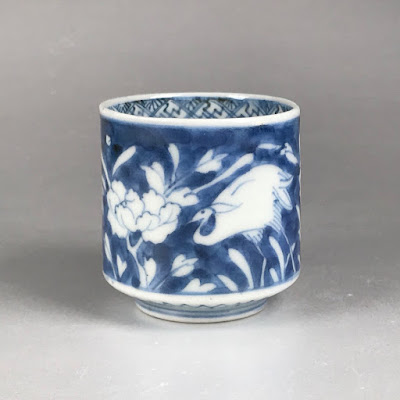19世紀はじめ Early 19c 口径 width 54 mm / 高さ height 62 mm 木の下に中国人っぽい人物がひとり腰掛け、余白に漢詩の一節が書かれている。樹下人物図は古伊万里に限らず、東洋美術ではよくあるモチーフである。器はやや厚ぼったく、18世紀末から19世紀前半の古伊万里のようにおもわれる。 There are a Chinese man sitting under a tree and a Chinese poem in the margin. This design of a man under a tree is widely seen in oriental art. 漢詩は、 「嫦娥(じょうが)は薬を窃(ぬす)んで人間(じんかん)を出(い)ず」 と読めて、月に住んだ伝説の天女、嫦娥( wikipedia参照 )のことを言っている。江戸末期から明治以降、中国を敵視、蔑視する思想が日本に蔓延するが、まだこの頃は、多くの人が中国へのあこがれ、リスペクトをもっていた、古き良き時代である。そもそも古伊万里は、中国磁器を模倣し、再現することを目指して発展した。明治以降の陶磁器に、技巧的なところはさておき、いまいち美しさを感じないのは、そういうところに一因があるのかもしれない、まあ、わたくしの感じ方ではあるが。 The poem says a Chinese legendary hermit, Chang'e (see wikipedia) , living in the Moon. From the end of Edo and Meiji periods, a thought prevailed to be hostile to and even despise China. However, people at the time when this Imari cup was made generally felt respect to China. In fact, the old Imari craftsmen in the 17th century aimed to imitate Chinese porcelain. 見込みの文様は、一般に「昆虫文」とよばれるものの派生であろ...

